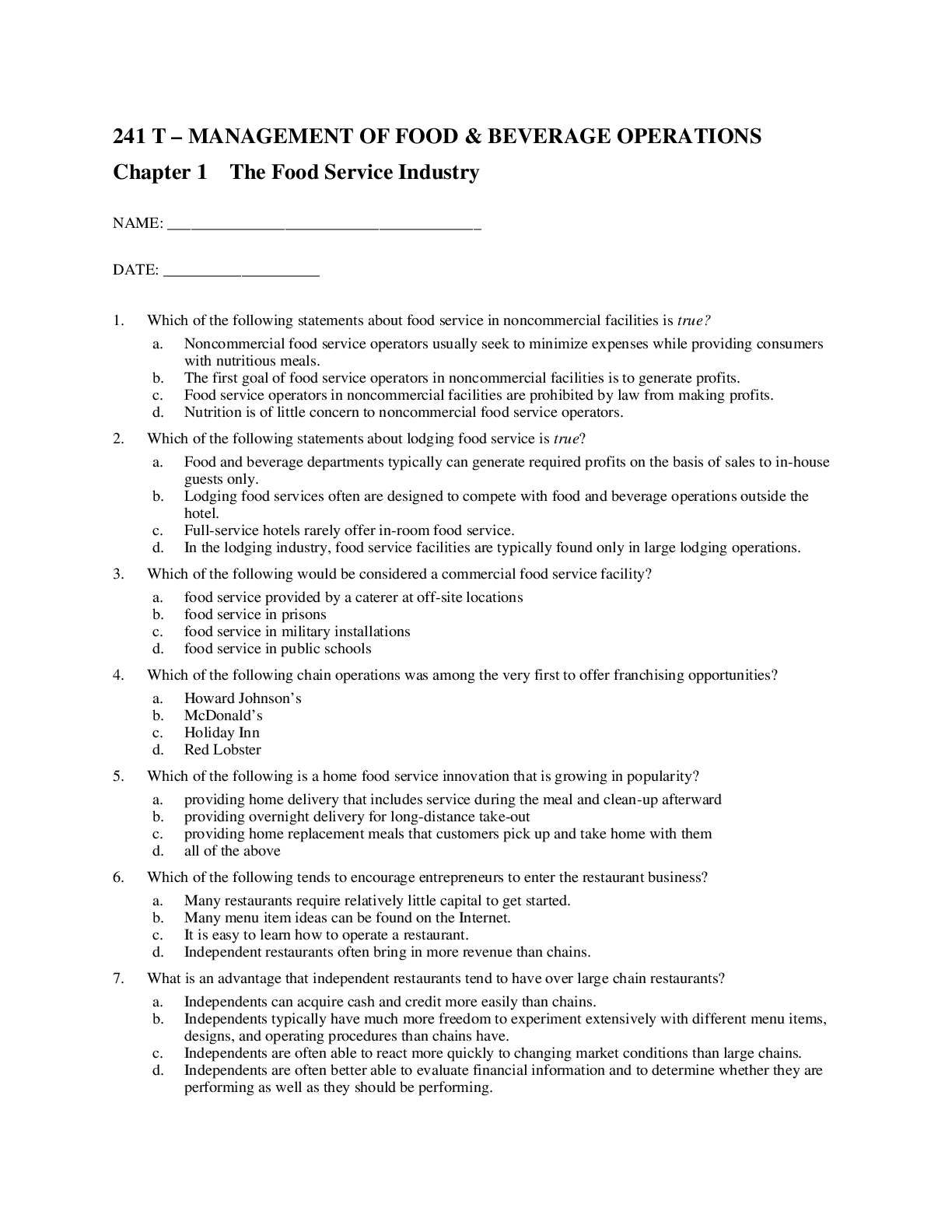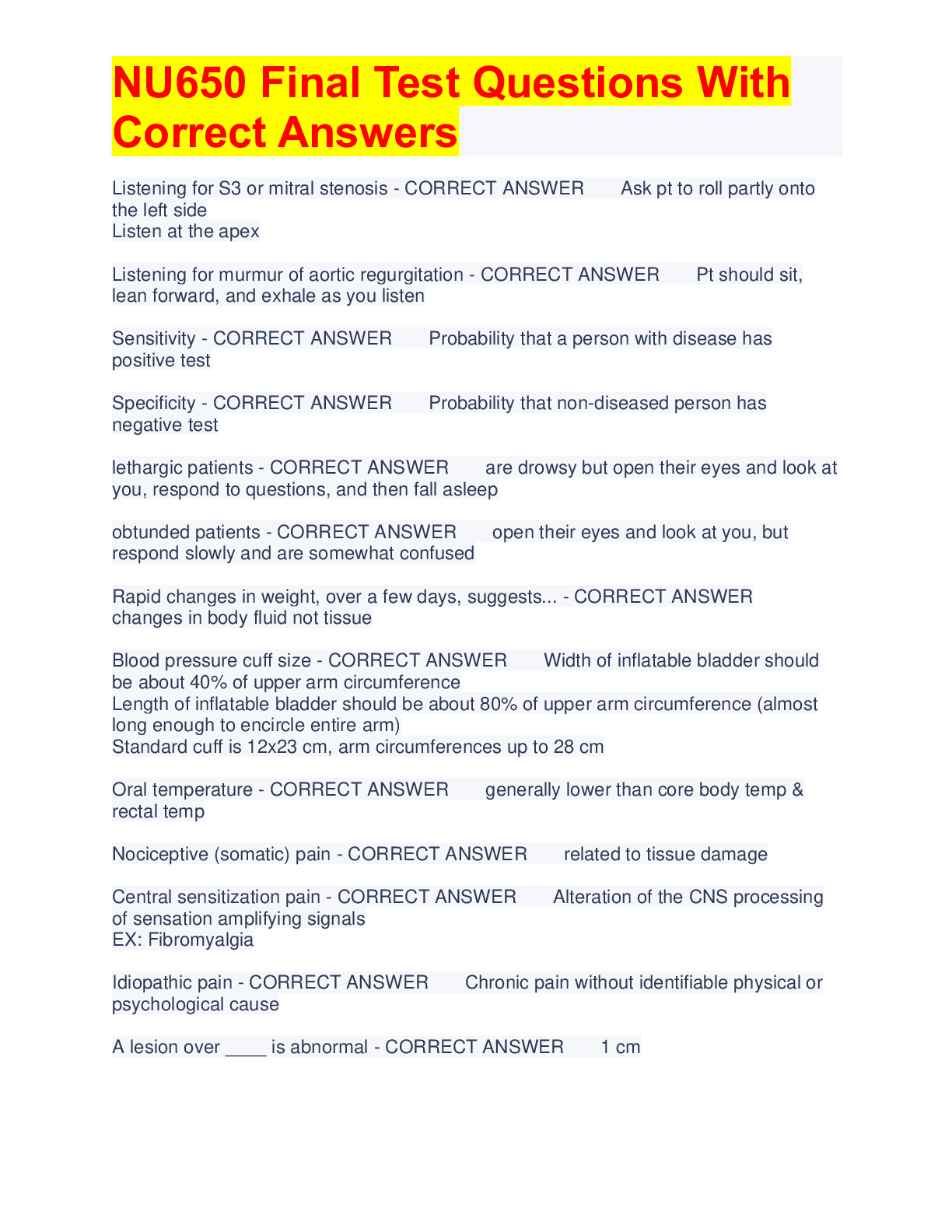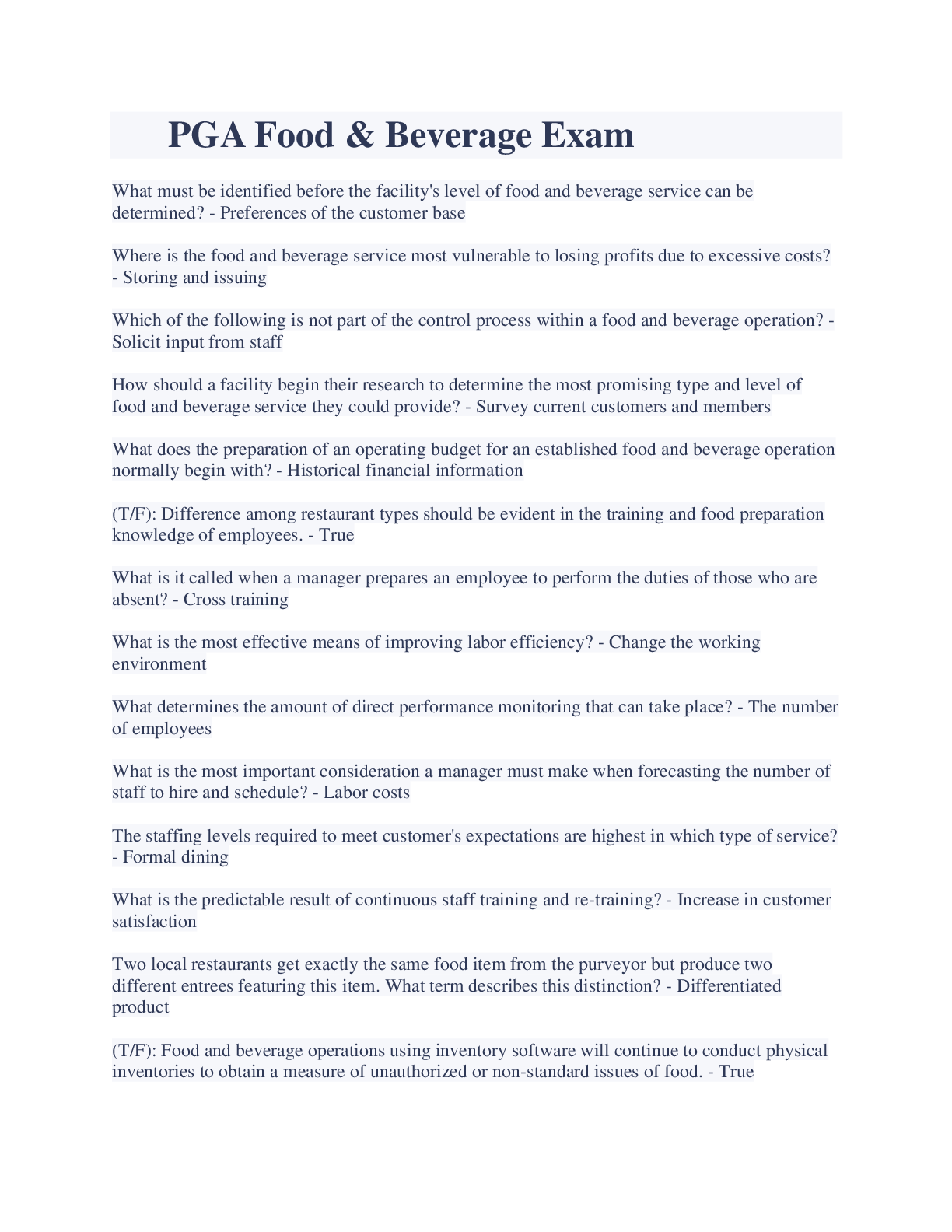241 T – MANAGEMENT OF FOOD & BEVERAGE OPERATIONS
Document Content and Description Below
Chapter 1 The Food Service Industry NAME: ________________________________________ DATE: ____________________ 1. Which of the following statements about food service in noncommercial facilities is ... true? a. Noncommercial food service operators usually seek to minimize expenses while providing consumers with nutritious meals. b. The first goal of food service operators in noncommercial facilities is to generate profits. c. Food service operators in noncommercial facilities are prohibited by law from making profits. d. Nutrition is of little concern to noncommercial food service operators. 2. Which of the following statements about lodging food service is true? a. Food and beverage departments typically can generate required profits on the basis of sales to in-house guests only. b. Lodging food services often are designed to compete with food and beverage operations outside the hotel. c. Full-service hotels rarely offer in-room food service. d. In the lodging industry, food service facilities are typically found only in large lodging operations. 3. Which of the following would be considered a commercial food service facility? a. food service provided by a caterer at off-site locations b. food service in prisons c. food service in military installations d. food service in public schools 4. Which of the following chain operations was among the very first to offer franchising opportunities? a. Howard Johnson’s b. McDonald’s c. Holiday Inn d. Red Lobster 5. Which of the following is a home food service innovation that is growing in popularity? a. providing home delivery that includes service during the meal and clean-up afterward b. providing overnight delivery for long-distance take-out c. providing home replacement meals that customers pick up and take home with them d. all of the above 6. Which of the following tends to encourage entrepreneurs to enter the restaurant business? a. Many restaurants require relatively little capital to get started. b. Many menu item ideas can be found on the Internet. c. It is easy to learn how to operate a restaurant. d. Independent restaurants often bring in more revenue than chains. 7. What is an advantage that independent restaurants tend to have over large chain restaurants? a. Independents can acquire cash and credit more easily than chains. b. Independents typically have much more freedom to experiment extensively with different menu items, designs, and operating procedures than chains have. c. Independents are often able to react more quickly to changing market conditions than large chains. d. Independents are often better able to evaluate financial information and to determine whether they are performing as well as they should be performing. [Show More]
Last updated: 2 years ago
Preview 1 out of 26 pages

Buy this document to get the full access instantly
Instant Download Access after purchase
Buy NowInstant download
We Accept:

Reviews( 0 )
$6.00
Can't find what you want? Try our AI powered Search
Document information
Connected school, study & course
About the document
Uploaded On
Jul 17, 2023
Number of pages
26
Written in
Additional information
This document has been written for:
Uploaded
Jul 17, 2023
Downloads
0
Views
89


.png)





.png)
.png)


.png)




